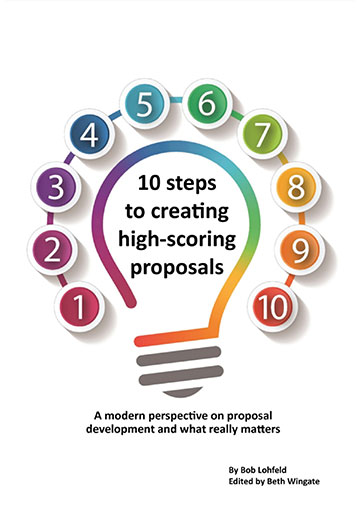FEMA’s C3MP: Modernizing Disaster Communications Now

When disasters strike, survivors depend on fast, reliable communication that the Contact Center Capability Modernization Program (C3MP) will deliver. Behind every call or chat session is a complex infrastructure of circuits, networks, cloud platforms, and agent systems that must perform under pressure. The Federal Emergency Management Agency’s (FEMA) Recovery Technology Program Division is now seeking contractor input on how to modernize its C3MP system—a sweeping effort that will transform the way FEMA engages with the public in times of crisis. This contract is a gem for businesses experienced in call center operations who want to engage with FEMA.
C3MP Purpose and Scope
FEMA issued a request for information (RFI) to understand market capabilities in supporting its contact center environment. Contractors are expected to provide full lifecycle support ranging from personnel and equipment to engineering, installation, and long-term sustainment. The goal is to ensure FEMA’s contact centers remain resilient, scalable, and secure as they transition to modern, cloud-based solutions. Table 1 presents an overview of C3MP.
Table 1: C3MP at a Glance
| Identifier | Description |
| Title | Contact Center Capability Modernization Program (C3MP) |
| Agency | Department of Homeland Security (DHS), Federal Emergency Management Agency (FEMA) |
| NAICS Code | 561422 (Telemarketing Bureaus and Other Contact Centers) and 517110 (Wired Telecommunications Carriers) |
| GovWin Opp ID | 256829 |
| RFP Type | Task/Delivery Order (using GSA’s Enterprise Infrastructure Solutions (EIS) vehicle) |
| Competition Type | Full and Open/Unrestricted |
| Value | $20M |
| RFP Date | 10/2025 |
| Projected Start Date | March 26, 2026 |
C3MP RFI Instructions
Respondents must submit their input by August 31, 2025; questions were due on August 15, 2025. Responses should:
- Include a cover page with company details.
- Provide a capability statement (≤10 pages) outlining relevant projects and past performance.
- Provide a response (≤10 pages) that addresses FEMA’s detailed questions across 10 areas: network reliability, cybersecurity, service delivery, scalability, interoperability, subcontracting, innovation, architecture, quality control, and past performance.
Please note that there was a discrepancy regarding the due date, which is listed as August 31st in the RFI and September 4th on SAM.gov.
Key Risks and Considerations
While FEMA’s RFI outlines an ambitious modernization vision, bidders must also anticipate the risks that could complicate execution and undermine performance if left unaddressed.
- Network Reliability: FEMA’s National Processing Service Centers must function during surges in call volume. Any downtime could delay aid to survivors.
- Cybersecurity: With rising threats, FEMA demands resilient systems that protect sensitive data and withstand evolving attacks.
- Scalability: Contractors must demonstrate the ability to quickly expand services during disasters or major events.
- Integration: Solutions must work seamlessly with federal systems, CRM platforms such as Salesforce, ServiceNow, or Microsoft Dynamics, and external partners.
- Innovation Pressure: FEMA explicitly seeks AI-enabled solutions (chatbots, predictive routing, speech analytics). Firms unable to demonstrate practical AI use cases may be at a disadvantage.
- Subcontractor Oversight: Compliance with FAR 52.219-14 requires careful management of teaming arrangements.
Strategic Questions to Explore
By engaging FEMA with strategic, forward-looking inquiries, bidders can uncover critical details that strengthen compliance, highlight risks, and shape a compelling proposal. Here are four questions that demonstrate proactive thinking and position your team for success:
- What performance metrics will FEMA use to measure contractor success during normal and surge events? This question encourages clarity and helps verify that your solution meets FEMA’s mission-critical need for responsiveness during disasters.
- Are there legacy system constraints or integration pain points that FEMA expects contractors to address? This question helps identify technical debt early, as well as help bidders create realistic transition and risk-mitigation strategies.
- What cybersecurity frameworks or standards beyond DHS policy will FEMA expect offerors to meet? This question helps bidders strengthen their approach by aligning solutions with the correct levels of security assurance without going overboard.
- Does FEMA anticipate a phased migration path to the cloud, and if so, what transition risks should bidders plan for? This insight allows contractors to propose scalable roadmaps that minimize disruption to survivor services.
Conclusion
For contractors, the opportunity lies in demonstrating scalable, secure, and innovative solutions that balance cutting-edge technology with mission assurance. At Lohfeld Consulting, we provide capture and proposal management and writing services to help firms navigate complex solicitations like this with proven strategies for compliance, strength-based proposal development, and risk mitigation. If your team is considering a response, contact us.
Relevant Information
By Brenda Crist, Vice President at Lohfeld Consulting Group, MPA, CPP APMP Fellow
Lohfeld Consulting Group has proven results specializing in helping companies create winning captures and proposals. As the premier capture and proposal services consulting firm focused exclusively on government markets, we provide expert assistance to government contractors in Capture Planning and Strategy, Proposal Management and Writing, Capture and Proposal Process and Infrastructure, and Training. In the last 3 years, we’ve supported over 550 proposals winning more than $170B for our clients—including the Top 10 government contractors. Lohfeld Consulting Group is your “go-to” capture and proposal source! Start winning by contacting us at www.lohfeldconsulting.com and join us on LinkedIn, Facebook, and YouTube(TM).
Paperback or Kindle
10 steps to creating high-scoring proposals
by Bob Lohfeld
contributors Edited by Beth Wingate
Subscribe to our free ebrief
Teaming friends, frenemies, and enemies—12 tips to mitigate harmful effects
Did you know that contracting officers spend up to 20% of their time mitigating disputes between teaming partners? In an informal poll we conducted on LinkedIn last month, 40% of respondents classified their teaming partners as “frenemies” on their last bid.
Explore Further
- Advice (539)
- AI (28)
- APMP (18)
- Army MAPS Contracts (3)
- Business Development (294)
- Capture Management (266)
- Complex Technology Grants Services (26)
- Favorite Books (5)
- GenAI (4)
- Go-to-Market (27)
- Graphics (5)
- Lohfeld Books (2)
- NASA SEWP VI Contracts (2)
- Navy SeaPort-NxG Contracts (2)
- NIST MSE Grants (1)
- NIST NAPMP Grants (2)
- Past Performance (63)
- Post-submission Phase (14)
- Pre-RFP Preparation (264)
- Proposal Management (339)
- Proposal Production (75)
- Proposal Reviews (38)
- Proposal Writing (107)
- Pursuit Phase (108)
- Research Report (4)
- Resources (63)
- Tools & Tips (421)
- Training (13)
- Uncategorized (223)

Sign Up for INSIGHTS and Download your FREE book
We'd love to help you with your proposals. Enjoy our complimentary Lohfeld Consulting Group Capture & Proposal Insights & Tips book with your FREE subscription to our Insights Newsletter.
GET YOUR FREE BOOK



